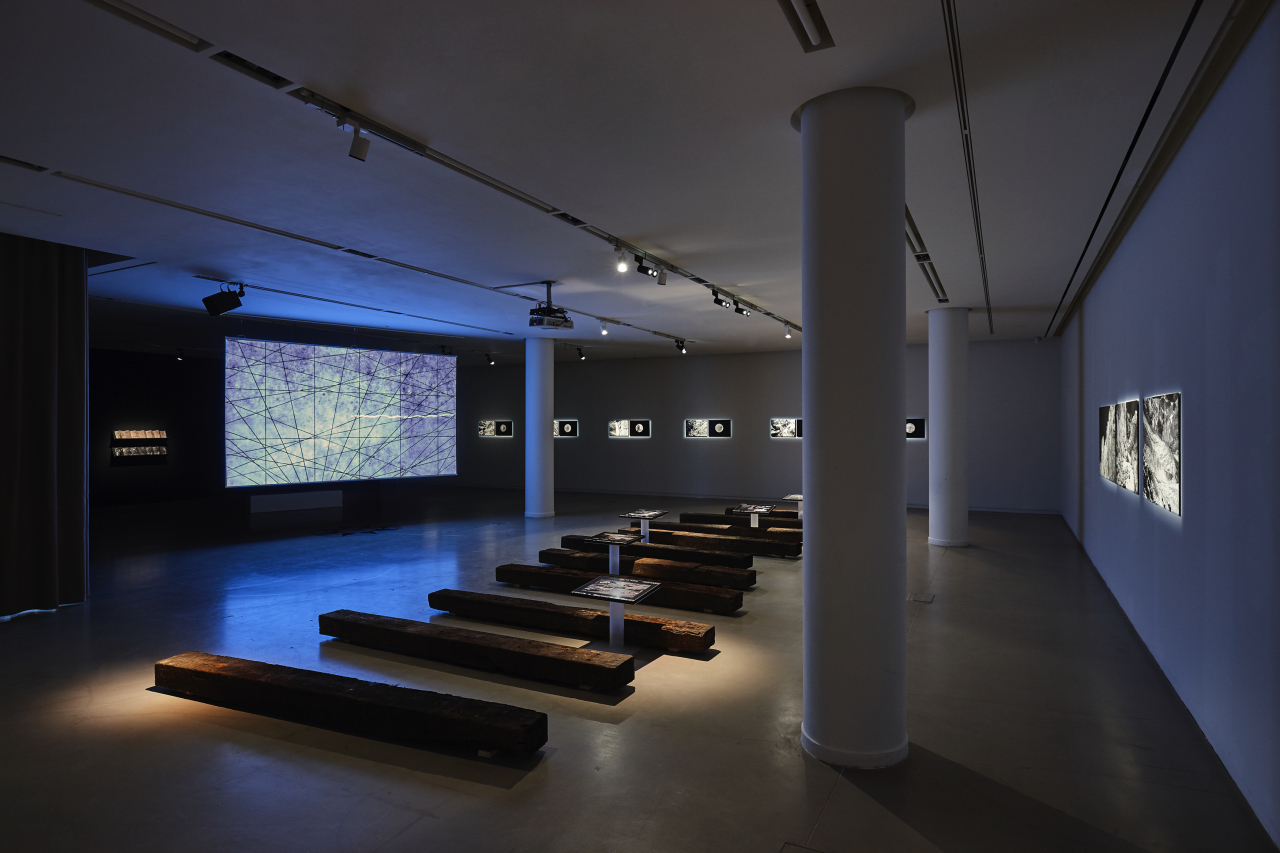Global silver reserves are shrinking fast and may run out as early as 2029 if we continue to mine the metal at the current rate without finding any new deposits, according to some experts.
Korean-French artist Daphne Nan Le Sergent recalled reading reports about diminishing silver supplies earlier this year and worrying if the depletion of silver would mean the disappearance of traditional photography.
Korean-French artist Daphne Nan Le Sergent recalled reading reports about diminishing silver supplies earlier this year and worrying if the depletion of silver would mean the disappearance of traditional photography.

Sergent’s exhibition “Silver Memories: How to Reach the Origin” at Atelier Hermes in Seoul started with her concerns about the imminent extinction of both the terrestrial silver deposits and the gelatin silver photographic process -- the main form of photography in the 19th century, which remained popular until the introduction of color and digital photography in recent decades.
The depletion of silver could be seen as a calamity not only because it could lead to the extinction of the old way of processing photographs, which produces images with greater clarity and sharpness, but more because it could lead to the annihilation of a way of recalling the past.
The old photographic process, which uses silver, remains a unique tool to remember the past for many people, including the artist.
“If silver disappears at a certain point and if we won’t be able to take photographs in the ways we did in the past, we would be deprived of a precious way of storing our memories. The digital photographs are easy to manipulate. If so, can we say that those are real representations of the past and our memories?” Sergent said during a recent interview with The Korea Herald at Atelier Hermes in Gangnam-gu, Seoul.
Old-style photography is a medium that can provide brief flashbacks or spur longing for the past -- like the narrator who goes on a journey of memory after he bites into a madeleine dipped in tea in Marcel Proust’s “In Search of Lost Time,” the artist explained.

Entering the exhibition space, visitors are first invited to join the artist’s journey to look for silver.
On the bright side on the right, a set of 10 wooden logs has been placed on the floor. In between the logs, there are film-framed photos. You can listen to the sounds of a stream, and you can walk over the logs as if jumping over bumpy hurdles near a stream to look for silver.
Shown on the walls are photographs of rocky terrain, juxtaposed with photos of retinas that show the capillaries in detail -- all in black and white.
There is also a lengthy video work, titled “Travels to our Inner Indias” (2019). This video work includes a narrative that makes connections to the history of Europeans’ accidental discovery of South America, as well as the colonization of the land and the discovery of silver mines, which later brought huge wealth.
When the video finishes the narrative of the European explorer, another narrative starts on the other side of the screen, shown in the dark side of the exhibition space.
The other half of the video is a narrative of a person seeking her memories and origins, which connects to the artist’s own journey as a French artist whose ethnic identity is Korean. Sergent, born in 1975, was adopted by a French family when she was 7 months old.
The journey to find the origin of silver and the concerns about the extinction both of silver and the old photographic process run parallel to her efforts to seek her origins and her lost memories.
Even after meeting her biological father in Korea, the artist said, it will still take more time to figure out whether she has come to terms with her past once and for all.
“I don’t feel like visiting Korea or finding my biological father have been about filling the blank I used to have. It has been more about picking up the memories that I had lost,” Sergent said.
Her ethnic origin doesn’t mean much, nor does her skin color. What makes her who she is now is her memories of her past, as well as emotions and sensations that arise from certain bits of memories. That is why she is exploring memories, those that may be long forgotten but nonetheless exist in our unconsciousness, the artist said.
The exhibition runs through Nov. 10.
By Shim Woo-hyun (ws@heraldcorp.com)



















![[Today’s K-pop] Treasure to publish magazine for debut anniversary](http://res.heraldm.com/phpwas/restmb_idxmake.php?idx=642&simg=/content/image/2024/07/26/20240726050551_0.jpg&u=)